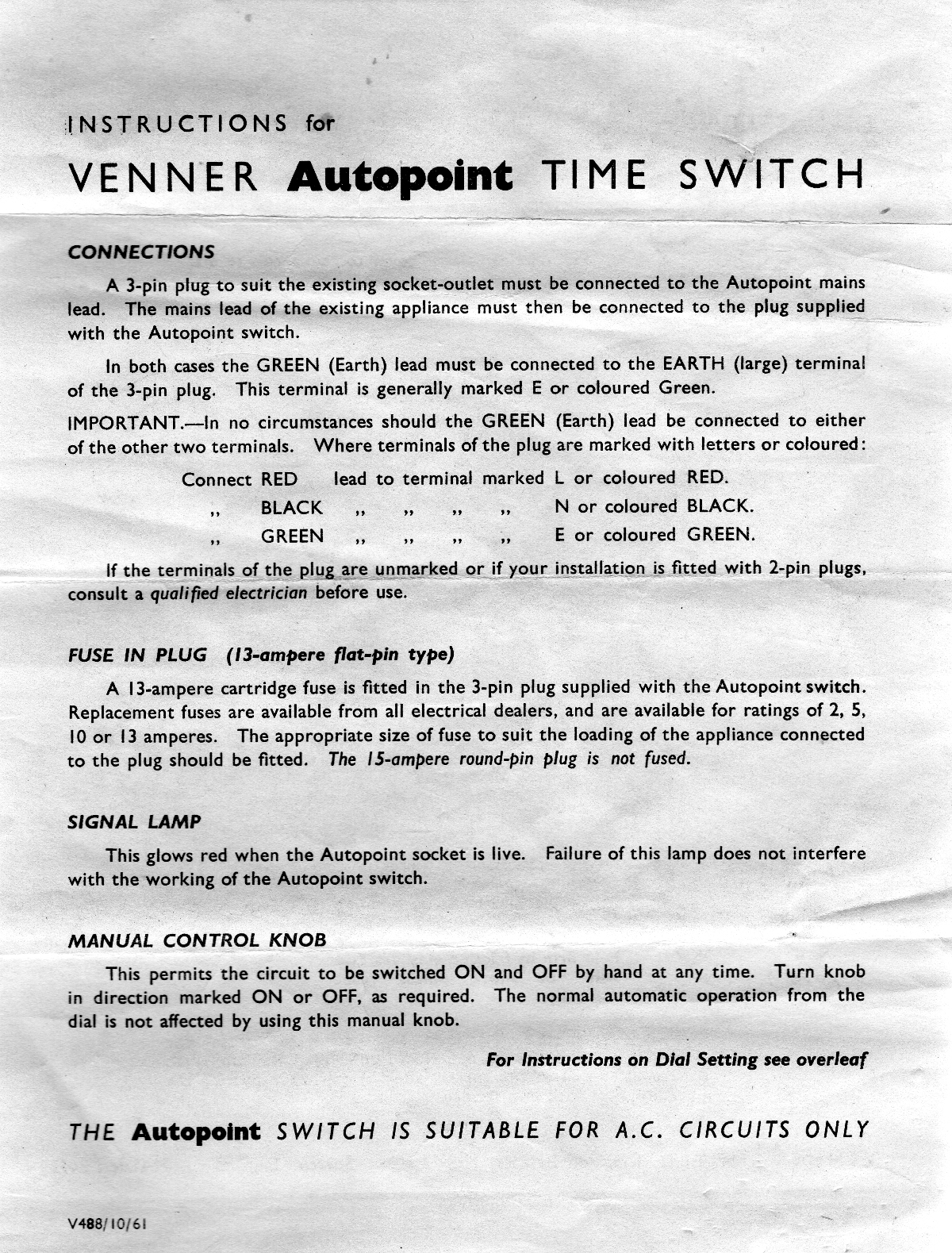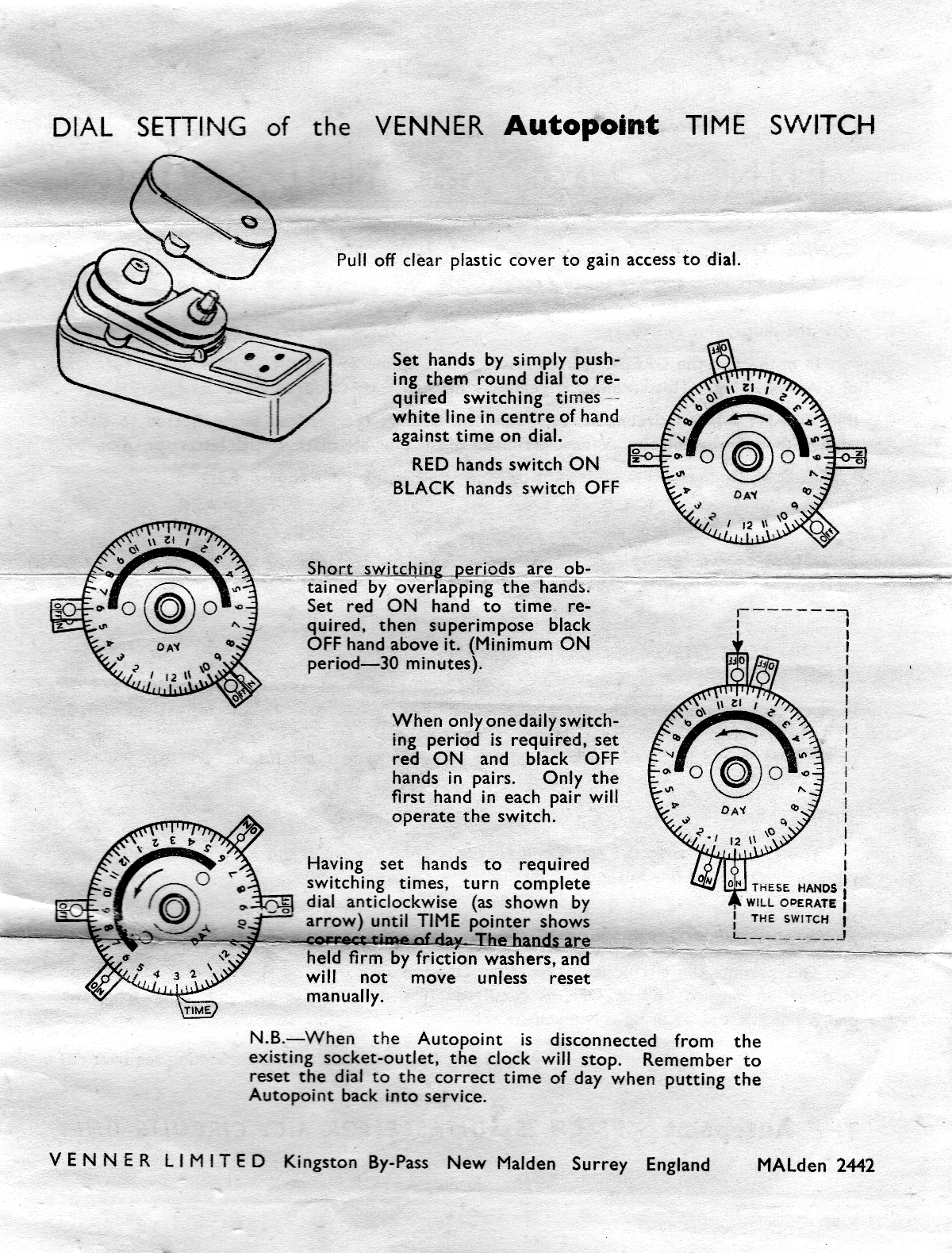Venner Autopoint
The Autopoint is the 1960s' forerunner to the modern integrated domestic plug-in timer, for controlling household appliances automatically, as required. Electrician John Ward features one in this informative video, in which he compares three Venner products.
This particular Autopoint has seen relatively little use, with its original box surviving and being in good condition.
The time switch and socket are formed into a single ivory Bakelite moulding, with the cotton-sheathed supply flexible cable entering through the back. When this device was made, appliances tended to be sold without a plug fitted; this being left to the householder to wire in. The Marbo plug seen here was included with the time switch, but post-dates it by a number of years - the biggest giveaway is the use of sleeved live and neutral pins - a requirement introduced in 1984 as an amendment to the B.S. 1363 safety standard. Additionally, the plug carries the equivalent Irish Standard I.S. 401: 1986, providing further evidence of its approximate age.
The flex is likely to be original, however, with the cores being coloured red (live), black (neutral) and solid green (earth), and the conductors being of tinned copper. This dates the Autopoint to no later than 1971. Note that the plug was wired before I acquired the time switch; this is not my wiring.
The Autopoint is capable of performing a maximum of two 'on' and two 'off' switching cycles within a 24-hour period. The individual levers are pushed into position by the user; these are slightly sprung and cannot be pushed accidentally by the clock mechanism as the dial rotates. In cases where only a single switching cycle is required, both levers of the same type must be placed together. The red object located down and to the left of the time switch is a neon indicator - this illuminates whenever the socket is live; a useful visual warning.
An un-switched GEC socket outlet allows the external appliance to be connected. Unlike modern sockets, the fixing screws here are mounting in a vertical arrangement. This would mean that, should this socket require replacement in the modern era, the new equivalent would have to be rotated by 90 degrees, in order for the fixing holes to line up.
A fibre-based backing plate obscures the internal wiring from view.
A set of instructions was included with the time switch; these are replicated below:


BACK TO THE SWITCHING DEVICES PAGE
CLICK HERE TO MAKE A MONETARY DONATION
© 2002 - English Street Lights Online